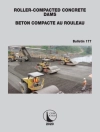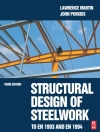For long-span bridges, wind action is a dominant factor in their safety and serviceability. A large number of long-span bridges have been built in Japan over the past 30 years, and tremendous amounts of research and technical development have been accomplished in wind-resistant design. This book is a compilation of the results of active research and development. Wind-resistant design standards generated in Japan are described in the first few chapters. Then comes information such as design wind speed, structural damping, wind tunnel tests, and analyses, which provide the basis of the design standards. Wind-induced vibrations and their control of girders, towers, cables, and other features are explained with examples of field measurements. Comprehensive listings of Japanese experience in vibration control are also presented. Because achieving particularly dynamic safety against wind is still not an easy task, these data and information will be valuable assets for the wind-engineering and bridge-engineering communities.
Mục lục
Wind Resistant Design Codes for Bridges in Japan.- Wind Resistant Design of Highway Bridges in General.- Wind Related Codes for the Honshu-Shikoku Project.- Design Wind Speed.- Structural Damping.- Wind Tunnel Tests.- Numerical Analysis and its Verification in Wind Resistant Design.- Vibration Control for Bridge Girders.- Vibration Control for Bridge Towers and Field Measurement.- Cable Vibrations and Control Methods.- Vibration Control for Bridge Members.- Wind Effects on Traffic.
Giới thiệu về tác giả
Prof.Fujino is a well-known researcher of civil engineering field. He previously published ‘Stock Management for Sustainable Urban Regeneration’ and ‘Risk Assessment, Management and Monitoring of Infrastructure Systems’ from Springer.












